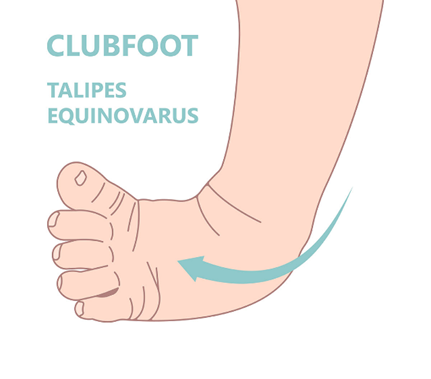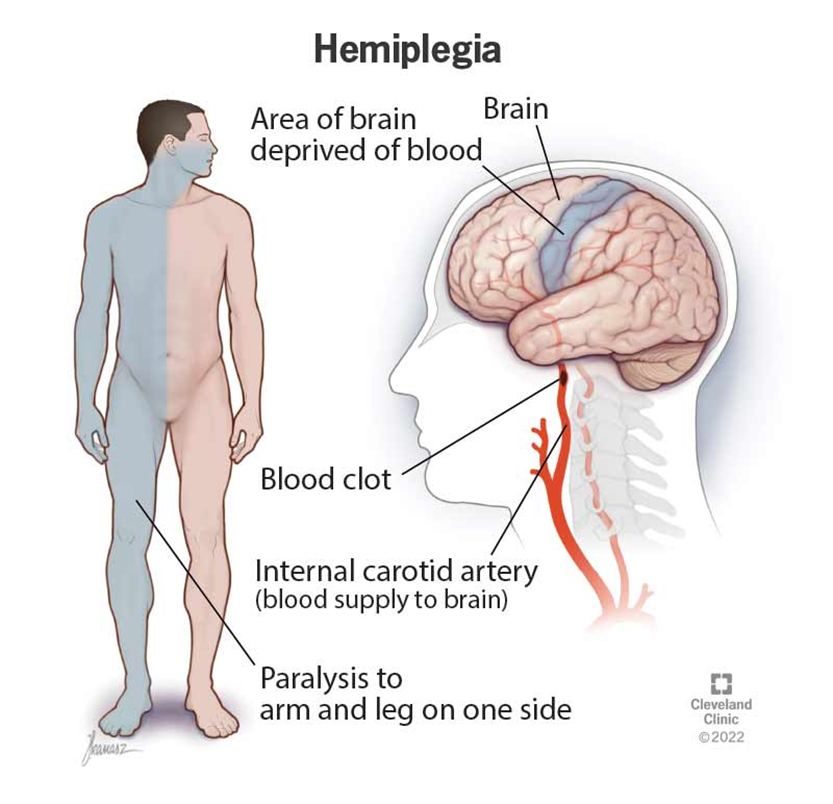A neonate is born with bilateral mild talipes equinovarus (clubfoot). When the parents ask the nurse how this will be corrected, the nurse should give which explanation?
Infants outgrow this condition when they learn to walk.
Surgical intervention is needed.
Traction with foot manipulation is used.
Frequent serial casting is tried first.
The Correct Answer is D
The correct answer is d. Frequent serial casting is tried first
Choice A reason:
Infants do not outgrow clubfoot on their own. Without treatment, the condition can lead to significant disability and difficulty walking. Early intervention is crucial to correct the deformity and ensure proper foot function.
Choice B Reason:
Surgical intervention is not the first line of treatment for mild cases of clubfoot. Surgery is typically reserved for severe cases or when nonsurgical methods, such as casting, have failed. The goal is to correct the foot’s position using less invasive methods whenever possible.
Choice C Reason:
Traction with foot manipulation is not a standard treatment for clubfoot. The primary nonsurgical treatment involves the Ponseti method, which includes gentle manipulation and serial casting to gradually correct the foot’s position.
Choice D Reason:
Frequent serial casting, known as the Ponseti method, is the first line of treatment for clubfoot. This method involves weekly manipulation and casting of the foot to gradually move it into the correct position. It is highly effective and is the preferred initial treatment for most cases of clubfoot.

Nursing Test Bank
Naxlex Comprehensive Predictor Exams
Related Questions
Correct Answer is D
Explanation
Choice A reason:
Releasing traction every hour to perform skin care: Releasing traction every hour is not recommended as it can disrupt the alignment and healing process of the fractured femur. Skin care is important, but it should be performed without compromising the traction setup.
Choice B Reason:
Releasing traction once every 8 hours to check circulation: While checking circulation is crucial, releasing traction every 8 hours is not necessary and can interfere with the therapeutic benefits of traction. Circulation can be monitored without releasing the traction.
Choice C Reason:
Maintaining continuous traction until 1 hour before the scheduled surgery: Continuous traction is essential to maintain the alignment of the fractured femur. However, there is no need to release traction 1 hour before surgery unless specifically instructed by the surgical team.
Choice D Reason:
Maintaining continuous traction and checking the position of traction: This is the most appropriate action. Continuous traction ensures proper alignment and healing of the fractured femur. Regularly checking the position of traction helps prevent complications and ensures the effectiveness of the treatment.

Correct Answer is ["A","B","C","D","E"]
Explanation
The correct answer is
A. Waddling gait
B. Kyphosis
C. Lordosis
D. Scoliosis
E. Gower sign
Choice A reason
Waddling gait: Children with Duchenne muscular dystrophy (DMD) often exhibit a waddling gait due to progressive muscle weakness, particularly in the pelvic girdle muscles. This gait pattern is a compensatory mechanism to maintain balance and mobility despite weakened muscles. The waddling gait is one of the early signs of DMD and typically becomes noticeable between the ages of 2 and 6 years.
Choice B Reason
Kyphosis: Kyphosis, an excessive outward curvature of the spine, can develop in children with DMD as the disease progresses. Muscle weakness and imbalance, particularly in the back muscles, contribute to this spinal deformity. Kyphosis can lead to discomfort, respiratory issues, and further mobility challenges, necessitating close monitoring and intervention.
Choice C Reason
Lordosis: Lordosis, an exaggerated inward curvature of the lower spine, is another common finding in children with DMD. This condition often develops as a compensatory mechanism to maintain an upright posture despite weakened hip and thigh muscles. Lordosis can cause lower back pain and impact overall posture and gait.
Choice D Reason
Scoliosis: Scoliosis, a lateral curvature of the spine, frequently occurs in children with DMD due to progressive muscle weakness and imbalance. As the disease advances, scoliosis can become more pronounced, leading to discomfort, respiratory complications, and further functional limitations. Early detection and management are crucial to mitigate these effects.
Choice E Reason
Gower sign: The Gower sign is a classic clinical indicator of DMD. It refers to the maneuver children with DMD use to rise from the floor, involving the use of their hands to “walk” up their legs due to proximal muscle weakness. This sign is typically observed in early childhood and is a key diagnostic feature of DMD1.
Whether you are a student looking to ace your exams or a practicing nurse seeking to enhance your expertise , our nursing education contents will empower you with the confidence and competence to make a difference in the lives of patients and become a respected leader in the healthcare field.
Visit Naxlex, invest in your future and unlock endless possibilities with our unparalleled nursing education contents today
Report Wrong Answer on the Current Question
Do you disagree with the answer? If yes, what is your expected answer? Explain.
Kindly be descriptive with the issue you are facing.
